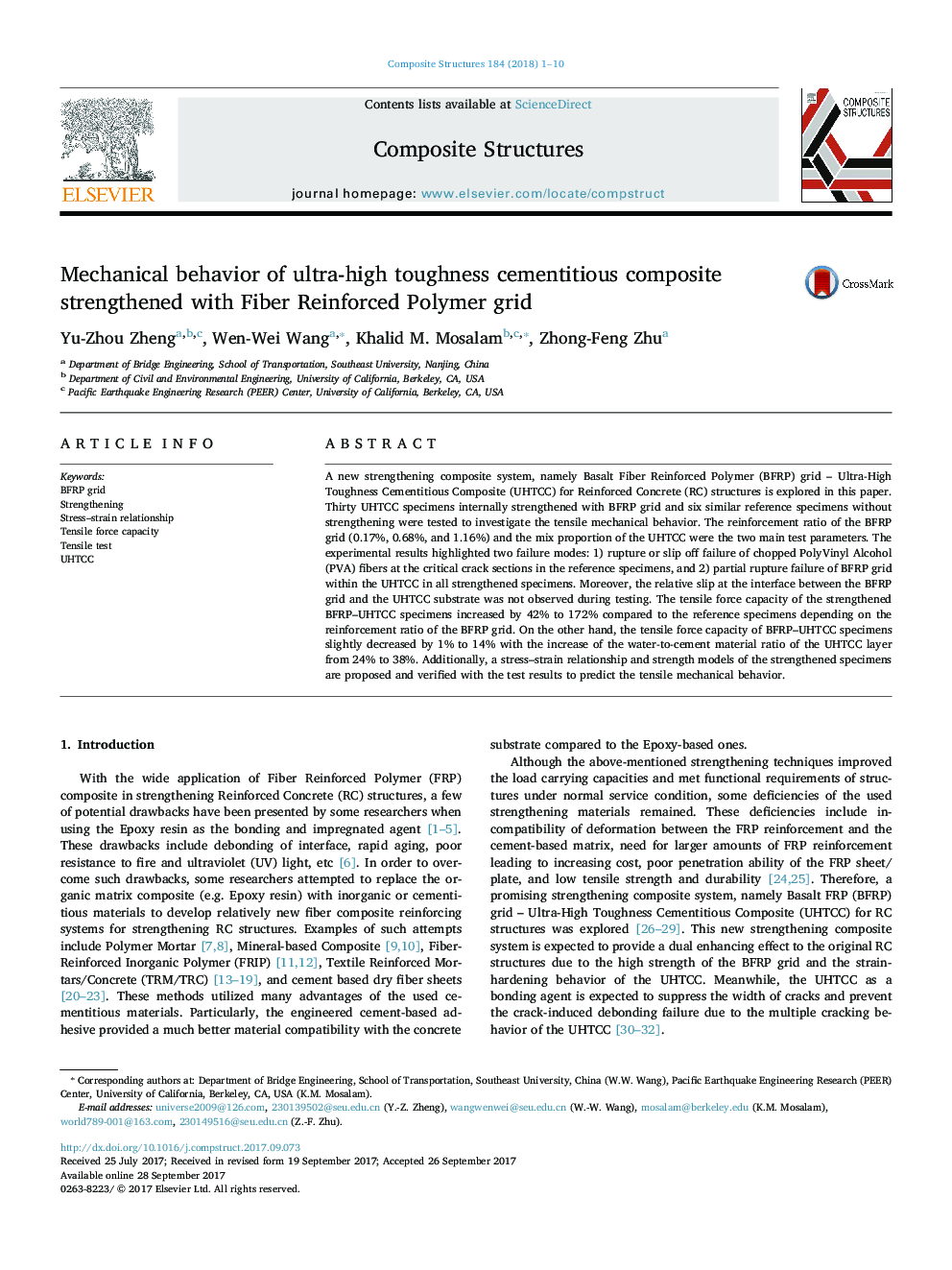| Article ID | Journal | Published Year | Pages | File Type |
|---|---|---|---|---|
| 4917561 | Composite Structures | 2018 | 10 Pages |
A new strengthening composite system, namely Basalt Fiber Reinforced Polymer (BFRP) grid - Ultra-High Toughness Cementitious Composite (UHTCC) for Reinforced Concrete (RC) structures is explored in this paper. Thirty UHTCC specimens internally strengthened with BFRP grid and six similar reference specimens without strengthening were tested to investigate the tensile mechanical behavior. The reinforcement ratio of the BFRP grid (0.17%, 0.68%, and 1.16%) and the mix proportion of the UHTCC were the two main test parameters. The experimental results highlighted two failure modes: 1) rupture or slip off failure of chopped PolyVinyl Alcohol (PVA) fibers at the critical crack sections in the reference specimens, and 2) partial rupture failure of BFRP grid within the UHTCC in all strengthened specimens. Moreover, the relative slip at the interface between the BFRP grid and the UHTCC substrate was not observed during testing. The tensile force capacity of the strengthened BFRP-UHTCC specimens increased by 42% to 172% compared to the reference specimens depending on the reinforcement ratio of the BFRP grid. On the other hand, the tensile force capacity of BFRP-UHTCC specimens slightly decreased by 1% to 14% with the increase of the water-to-cement material ratio of the UHTCC layer from 24% to 38%. Additionally, a stress-strain relationship and strength models of the strengthened specimens are proposed and verified with the test results to predict the tensile mechanical behavior.
